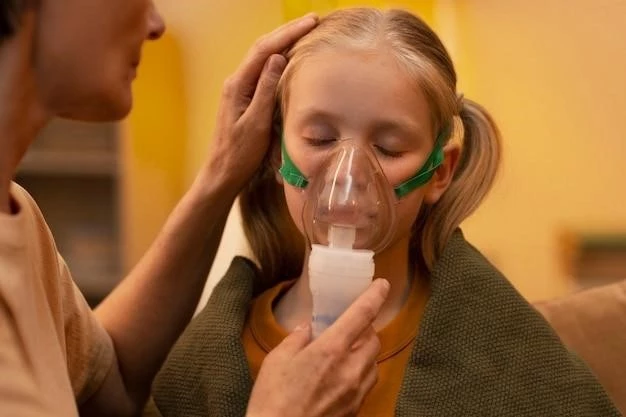Introduction
Post-polio syndrome is a condition that can affect individuals who have had polio in the past. This syndrome involves the development of new symptoms years after the initial polio infection, leading to muscle weakness, fatigue, and pain. Understanding the impact of post-polio syndrome is crucial for effective management and support of individuals affected by this condition.
Definition of Post-Polio Syndrome
Post-polio syndrome (PPS) is a condition that can affect individuals who have had polio in the past. It manifests as a group of potentially disabling signs and symptoms that appear decades after the initial polio infection. The syndrome involves the exacerbation of muscle weakness, fatigue, and pain, impacting individuals who previously experienced polio. Understanding the latent symptoms and challenges of post-polio syndrome is crucial for appropriate diagnosis and management.
Overview of Polio and Post-Polio Syndrome
Post-polio syndrome (PPS) can affect individuals who had polio in the past, causing muscle weakness, fatigue, and pain decades later.
Understanding Polio
Polio, caused by the poliovirus, is an infectious disease that primarily affects the nervous system. Post-polio syndrome can develop later in life, leading to muscle weakness, fatigue, and pain in individuals who previously had polio.
Causes of Post-Polio Syndrome
Post-polio syndrome (PPS) can develop in individuals who have previously had polio. The condition arises due to the long-term effects of the initial poliovirus infection on the nervous system, leading to the gradual onset of muscle weakness, fatigue, and pain years after the acute polio illness.
Symptoms of Post-Polio Syndrome
Post-polio syndrome (PPS) manifests in muscle weakness, fatigue, and pain years after recovering from polio infection.
Muscle Weakness and Atrophy
Post-polio syndrome (PPS) often presents with muscle weakness and atrophy, impacting individuals years after recovering from the initial polio infection. These symptoms can significantly affect mobility and daily activities, necessitating proper management strategies.
Fatigue and Exhaustion
Post-polio syndrome often includes symptoms of fatigue and exhaustion, impacting individuals years after their initial polio infection.
Pain in Muscles and Joints
Individuals with post-polio syndrome commonly experience pain in muscles and joints years after their initial polio infection, affecting their quality of life and daily activities.
Post-polio syndrome (PPS) diagnosis involves clinical evaluation and electrophysiological findings to confirm symptoms related to past polio infection.
Clinical Evaluation
Clinical evaluation plays a critical role in confirming post-polio syndrome (PPS) by assessing the presence of muscle weakness, fatigue, and pain in individuals with a history of polio infection. Specific diagnostic criteria and tests are employed to differentiate PPS symptoms from other conditions, aiding in accurate diagnosis and treatment planning.
Diagnosis of Post-Polio Syndrome
Post-polio syndrome (PPS) diagnosis involves clinical evaluation and electrophysiological findings to confirm symptoms related to past polio infection.
Treatment Options for Post-Polio Syndrome
Treatment for post-polio syndrome (PPS) includes physical therapy, medications for symptom management, and lifestyle modifications.
Physical Therapy and Rehabilitation
Physical therapy and rehabilitation play a crucial role in managing post-polio syndrome (PPS) by focusing on strengthening muscles, improving mobility, and enhancing overall function in individuals experiencing muscle weakness and fatigue due to past polio infection.
Medications for Symptom Management
Various medications are utilized to manage the symptoms of post-polio syndrome (PPS), including pain relievers and medications to address fatigue in individuals affected by muscle weakness and other debilitating symptoms of PPS.
Management of Post-Polio Syndrome
Lifestyle modifications and the use of assistive devices are essential components of managing post-polio syndrome (PPS) effectively.
Lifestyle Modifications
Lifestyle modifications play a crucial role in managing post-polio syndrome (PPS) by adapting daily routines, conserving energy, and making adjustments to accommodate new physical limitations resulting from the condition.
Assistive Devices and Mobility Aids
Utilizing assistive devices and mobility aids can enhance independence and safety for individuals managing post-polio syndrome, helping to overcome physical challenges and improve quality of life.
Impact of Post-Polio Syndrome on Daily Life
Post-polio syndrome (PPS) can pose challenges in performing daily activities and have psychological impacts on affected individuals.
Challenges in Performing Daily Activities
Post-polio syndrome (PPS) can present challenges in the performance of daily activities due to muscle weakness, fatigue, and pain experienced by individuals, impacting their functional abilities and quality of life.
Psychological Impact and Coping Strategies
Post-polio syndrome not only impacts physical health but also affects the psychological well-being of individuals. Coping strategies such as counseling, support groups, and stress management techniques can help individuals navigate the emotional challenges associated with managing post-polio syndrome.

Prognosis and Life Expectancy
Factors affecting the prognosis of post-polio syndrome and the life expectancy of individuals with this condition are important considerations in managing the long-term health outcomes of those affected.
Factors Affecting Prognosis
The prognosis of post-polio syndrome is influenced by various factors, including the severity of muscle weakness, the individual’s overall health status, and the effectiveness of management strategies implemented to address the symptoms of the condition. Understanding these factors is essential for determining the long-term outlook for individuals living with post-polio syndrome.
Life Expectancy of Individuals with Post-Polio Syndrome
The life expectancy of individuals with post-polio syndrome (PPS) can vary based on factors such as overall health, severity of symptoms, and access to medical care and support. Proper management and interventions can help improve the quality of life and potentially extend life expectancy for individuals living with PPS.
Research and Developments in Post-Polio Syndrome
Ongoing studies and clinical trials on post-polio syndrome aim to enhance understanding and develop innovative therapies for individuals affected by this long-term condition.
Ongoing Studies and Clinical Trials
Current research focuses on ongoing studies and clinical trials to further understand post-polio syndrome and explore potential innovative treatment approaches for individuals affected by this long-term condition.
Emerging Therapies and Innovations
Efforts are underway to develop emerging therapies and innovative interventions to address the symptoms and challenges faced by individuals living with post-polio syndrome (PPS), aiming to enhance their quality of life and functional abilities through advanced treatment strategies.
Post-Polio Syndrome and Aging
Post-polio syndrome (PPS) may impact individuals differently as they age, influencing symptoms and overall health conditions.
Impact of Aging on Post-Polio Syndrome
Aging can exacerbate symptoms of post-polio syndrome, leading to increased fatigue, pain, and muscle atrophy in some individuals, impacting their overall health and well-being as they grow older.
Common Health Conditions in Older Adults with PPS
Older adults with Post-Polio Syndrome may experience conditions such as fatigue, pain, and muscle atrophy, alongside an increased likelihood of developing secondary health issues due to existing impairments.
Global Awareness and Advocacy for Post-Polio Syndrome
Support organizations and networks play a vital role in raising awareness and advocating for individuals affected by post-polio syndrome (PPS), promoting research, education, and resources for better management of this condition globally.
Support Organizations and Networks
Support organizations and networks are instrumental in providing assistance, resources, and advocacy for individuals living with post-polio syndrome (PPS), fostering a supportive community and promoting awareness of the condition on a global scale.
Awareness Campaigns and Initiatives
Global awareness campaigns and initiatives play a vital role in educating the public, healthcare professionals, and policymakers about post-polio syndrome (PPS), highlighting the challenges faced by individuals with the condition and advocating for better support, research, and resources to improve their quality of life.
Post-Polio Syndrome in the Media
Personal stories and testimonials depict the challenges and triumphs of individuals affected by post-polio syndrome.
Personal Stories and Testimonials
Personal stories and testimonials provide insight into the lived experiences of individuals grappling with post-polio syndrome, shedding light on the challenges and triumphs they encounter on their journey.
Representation of PPS in News and Documentaries
News and documentaries often showcase the impact of post-polio syndrome, highlighting personal journeys and raising awareness about the challenges faced by individuals living with PPS.

Conclusion
In conclusion, post-polio syndrome (PPS) presents as a complex condition affecting individuals who have previously had polio infection. With ongoing research, advocacy efforts, and support networks, individuals with PPS can navigate the challenges and enhance their quality of life through innovative therapies and management strategies.
